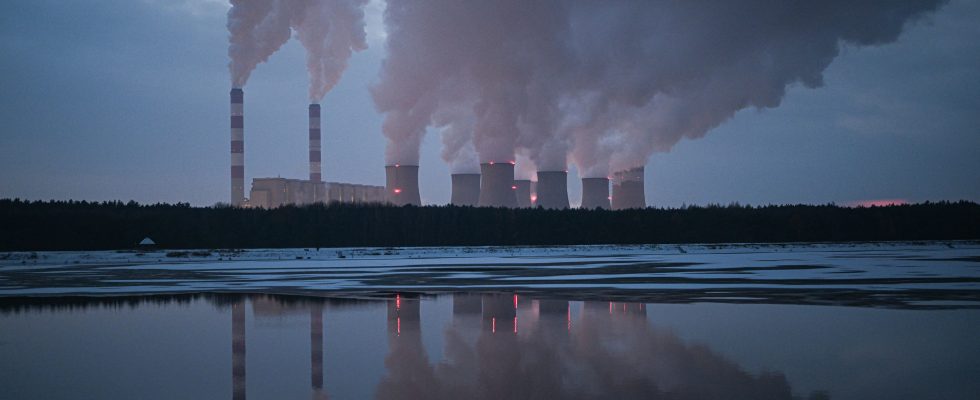Is the European carbon quota market going crazy? Designed as a tool to encourage companies to invest in the transition, the European mechanism, which today involves more than 10,000 of the continent’s highest emitting companies, leaves one doubtful. While a tonne of CO2 was traded in February 2023 at a record price of 100 euros, a year later its value fell by 40%. Devalued by the drop in production linked to the continent’s economic slowdown and the good health of the renewable energy sector, CO2 is peaking at around 60 euros per tonne. “The market is slipping, if we want to achieve a 55% reduction in our emissions in 2030, the price of carbon will have to increase spectacularly, but for the moment we are not taking the lead,” says Christian. Gollier.
The economist from the Toulouse School of Economics is a staunch defender of carbon pricing. For a long time, he thought about how to encourage the economy, and in particular the most emitting sectors such as industry, to take the path of green transition. Its conclusion is that only a high price of CO2 will make it possible to meet the challenge of carbon neutrality. The principle: when the ton of carbon reaches a sufficiently high level, investing in decarbonization is more efficient from an economic point of view than purchasing new allowances on the market to offset its emissions. With the European Union’s carbon quota trading system, companies that emit massive amounts of greenhouse gases are therefore called upon to take a gamble. That the investments they are making now in changes to industrial processes, technologies or energy transition will be less costly in the future than the price of CO2 permits.
Reduced funding for green projects
But for the moment carbon quotas are struggling to find their right price, and above all produce uncertainty. “Our decarbonization plans are built on rising carbon price scenarios and these market fluctuations make projections difficult,” concedes Laure Helard, general delegate of France Ciment, the organization representing the sector.
For these industries, like the steel industry or fertilizer production, the stakes are considerable. Many technologies depend on a high price of CO2 to ensure their profitability. According to specialists, the capture and storage of CO2 from factories requires a minimum price of 100 euros per tonne to be profitable. Likewise, the use of hydrogen to replace certain industrial processes is only financially viable beyond a certain threshold. Anticipating this future increase, part of the industry has been making its transition for several years, despite a still low price. “We have noted an increase in the number of patent filings within emission-intensive companies, which shows that they are preparing,” underlines David Lolo, economist in charge of studies at Fabrique de l’industrie.
In 2019, a commission chaired by economist and senior civil servant Alain Quinet was responsible for defining the “tutelary value of carbon”, i.e. a reference value for investments in decarbonization. His work estimated the value of 250 euros per tonne of CO2 to be reached by 2030 to be on a trajectory of carbon neutrality in 2050. Will we move towards this level? “No one can say, as there are still so many uncertainties,” says Laure Helard. Because beyond market developments, the very future of the system will depend on political decisions on how to support the transition at European level. “We see that the European Union suddenly seems to hesitate on the Green Deal, this creates doubt among market players who wonder whether restrictive policies on emissions and purchases of allowances will remain the solution favored by the Commission in the future. future”, notes Christian Gollier.
A mechanism to respond to competitiveness challenges
Although scrutinized, this decline, which economists and professionals consider to be cyclical, does not seem to call into question the plans of those first concerned for the moment. “Despite the recent drop in carbon prices in Europe, the carbon costs imposed on the European steel industry remain significant. Above all, our decarbonization strategy is not influenced by short-term trends,” says ArcelorMittal, the second largest steel producer in the world.
Visibility could improve as quotas decrease, which should automatically increase their price. Between 2024 and 2027, their number will be reduced by 4.3% per year then by 4.4% in 2028. Finally, to respond to competitiveness issues and avoid carbon leaks – namely the relocation of polluting activities to other regions that are less attentive to environmental constraints – the European Commission has decided to set up a carbon border adjustment mechanism (CBAM) from 2026. A tariff system which aims to level the playing field by imposing a tax on imported products that do not meet the EU’s emissions reduction requirements. “This mechanism will equalize today the carbon cost paid by European and non-European manufacturers,” assures Laure Helard. “We can expect that there will be a real incentive for them to decarbonize.”
.
